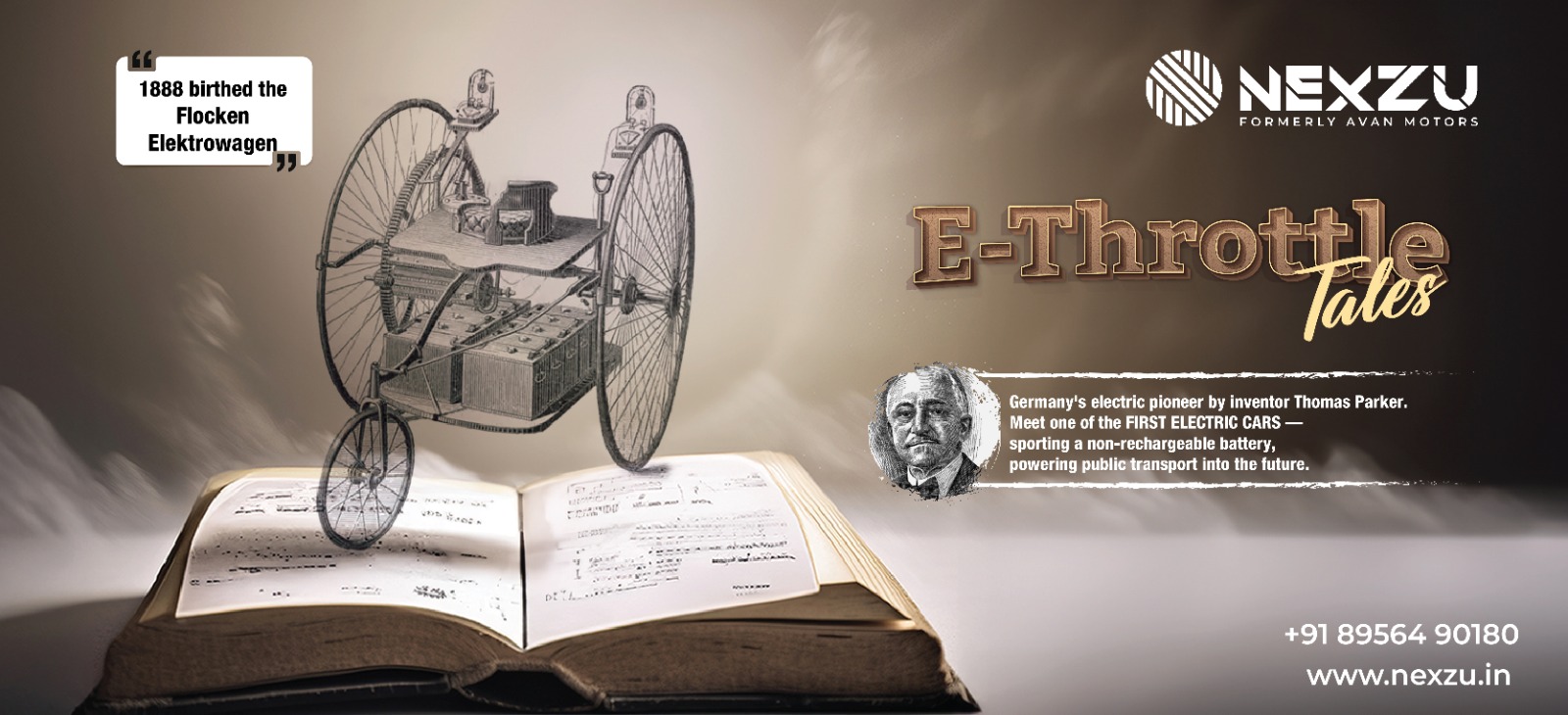In the annals of electric vehicle history, the year 1888 stands as a significant milestone with the birth of the Flocken Elektrowagen, a groundbreaking creation by the German inventor Thomas Parker. As we delve into the E-Throttle Tales by Nexzu Mobility, today’s chapter takes us back to the roots of electric mobility, where innovation laid the foundation for a sustainable future.
Picture this: 1888, a time when the world was on the cusp of industrial revolution, and Thomas Parker unveiled one of the first electric cars, the Flocken Elektrowagen. It was not just an automobile; it was a visionary leap into the future of transportation. At a time when internal combustion engines were beginning to make waves, Parker’s creation stood out as an embodiment of progress and environmental consciousness.
The Flocken Elektrowagen was equipped with a non-rechargeable battery, a testament to the nascent stage of electric vehicle technology. Despite the limitations of the era, Parker’s creation was revolutionary for its time, serving as a precursor to the electric vehicles we know today. The visionary inventor’s contribution to the automotive landscape cannot be overstated, as he envisioned a future where public transport would be powered by clean and sustainable energy.
This electric pioneer’s vision was particularly evident in the context of public transport, as the Flocken Elektrowagen paved the way for a cleaner, quieter, and more efficient mode of transportation. The non-rechargeable battery may seem antiquated by today’s standards, but it was a crucial step in the evolution of electric mobility.
As we reflect on the Flocken Elektrowagen, we recognize it as more than just a historical artifact. It represents the audacity to dream beyond convention, the courage to challenge the status quo, and the foresight to envision a greener tomorrow. Thomas Parker’s creation was not merely a vehicle; it was a harbinger of change that continues to inspire the electric mobility landscape today.


